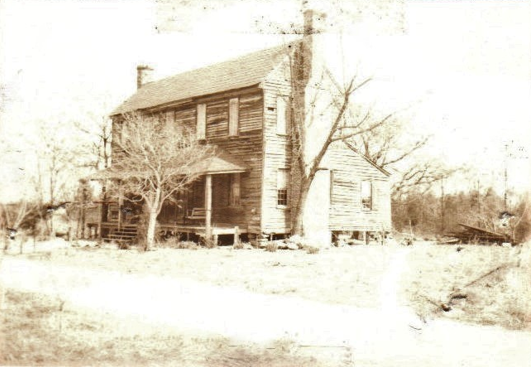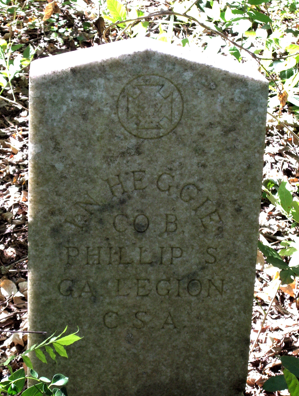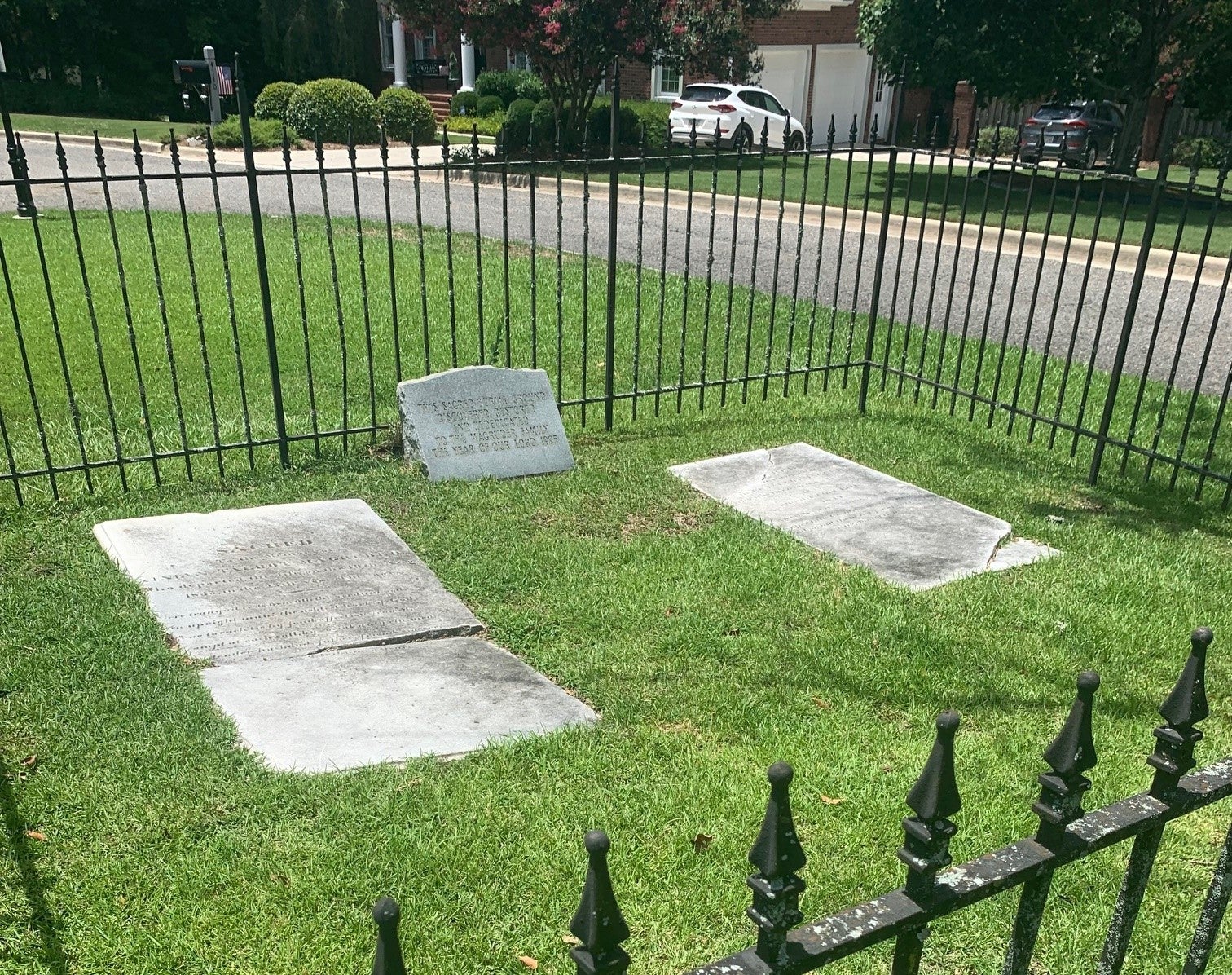Most people today would not ever think of burying a loved one in their backyards, but for rural families in the 19th century, the practice was quite common, and ancestral gravesites can be found all over Columbia County and on the federally managed lands around Clarks Hill Lake.
In 1995, developers expanding a prominent Evans subdivision stumbled upon a pair of graves in an area that had long been forested over.
The graves belonged to Ninian Talbot MacGruder and her son, Charles Talbot MacGruder. Ninian died in 1835 at age 23, mere months after giving birth to her son. Charles would only live to age six and was interred next to his mother in 1841.
The developers decided to name the part of the subdivision for the family and kept the graves in situ, adding a wrought iron fence, a historical marker and a memorial bench.
In what might seem like the scene in Forrest Gump where the fictional title character buries his love Jenny under their favorite oak tree in rural Alabama, David Quebedeaux, park ranger for the U.S. Army Corps of Engineers, says that a burial on private land was customary in the 19th century South.

“People would look for a really old cedar tree as a burial area. Cedars are hearty and live for a long time and provide excellent shade for families to visit and remember their loved one,” Quebedeaux said.
Quebedeaux ought to know a thing or two about 19th century graves as they are dotted all over the place on the 80,000 acres of land around Clarks Hill that is managed by the Corps of Engineers.
MORE: Something You May Not Have Known: Home Folks News and Records
In the 1950s, when Thurmond Dam was being constructed, residents living in the towns of Lisbon, Petersburg and other smaller settlements had to be relocated. The Corps of Engineers successfully located the families of hundreds of people buried in and around the towns and those graves were moved based on the wishes of the families.
For graves of whom their families could not be located, according to Quebedeaux, the grave was “preserved by inundation,” meaning they now sit under hundreds of feet of water and will never be disturbed.
Many of the graves that remain on federal land are those of men who served in the Civil War, and Ken Boyd, chief ranger for the Forest, Fish and Wildlife Section of the Corps of Engineers says that almost all of those are not the remains of those who died in battle.
There has long been a rumor that men from an entire Confederate company unit are buried together somewhere in Columbia County, but Boyd thinks that is highly unlikely.
There were no Civil War battles fought in Columbia County, and generally those who did die in battle were either hastily buried by the locals or left to decompose in the elements in the place where they fell.
MORE: Something You May Not Have Known: Augusta’s history with bullets and bombs
One notable exception is the fact that fallen soldiers were transported to what is now Arlington National Cemetery, but it was not necessarily done out of respect for the dead. Rather it was done out of disrespect for the family of Confederate General Robert E. Lee.
During the war, Union troops seized the Lee family’s Arlington Plantation and began interring war dead there to discourage the Lee family from ever wanting to live on the property again.
The measure worked.

Augusta was a hospital city during the war, so it is certainly in the realm of possibility that an entire company could have been wounded, transferred by train to Augusta, and many of the men could have died while being treated, necessitating a mass burial. However, the dead being transferred 30 to 40 miles outside of Augusta for burial seems improbable.
“The graves we have found are soldiers that survived the war and we can tell by the date of death,” Boyd said.
According to Boyd and Quebedeaux, in the course of the Corps of Engineer’s forestry program, graves are still being discovered either by a headstone being found or a keen eye noticing the distinct impression in the ground left after a coffin has disintegrated and the ground over it settles.
In those cases, the location is mapped, and the area left undisturbed. The Corps of Engineers does try to research and contact the remaining family, but the locations are not made public to deter possible vandalism.
…And that is something you may not have known.
Scott Hudson is the senior reporter for The Augusta Press. Reach him at scott@theaugustapress.com











